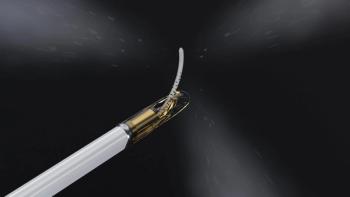
Blood and oil find common ground in Texas
In an unlikely gathering, representatives of medical imaging and petroleum industries met Nov. 12 at the University of Houston to explore common mechanical problems associated with moving blood and oil through vessels and pipelines.
In an unlikely gathering, representatives of medical imaging and petroleum industries met Nov. 12 at the University of Houston to explore common mechanical problems associated with moving blood and oil through vessels and pipelines.
The Pumps and Pipes I conference, sponsored by ExxonMobil, the Methodist DeBakey Heart Center, and the University of Houston, attracted a standing-room only crowd of nearly 150 radiologists, cardiologists, surgeons, medical device manufacturers, geologists, and engineers, according to Dr. Alan B. Lumsden, a vascular surgeon at Methodist and organizer of the event.
"We wanted to stimulate discussion, spark ideas, and share new technologies between these industries that face similar challenges, even if on a very different scale," Lumsden said.
Speakers alternated between lectures on medicine and oil, each series giving a parallel example of the close relationship between the two disciplines.
Dr. King Li, formerly the chair of the imaging sciences program at the National Institutes of Health and now radiology chair at Methodist Hospital, gave an overview of medical imaging. His lecture was followed by an overview of the imaging used in the oil and gas industry, such as MRI, ultrasound, and CT.
A lecture on left ventricular assist devices was followed by one on subsurface pumps and another on atherosclerosis was followed by one on corrosion and scale management.
Common ground between medical imaging and oil exploration can be found in stent grafts used to open arteries and expandable casings used to hold open and waterproof oil and gas pipelines. A 20,000-foot-deep oil hole has to be lined with a steel casing to prevent it from leaking as the oil gushes upwards.
"As surgeons who treat aneurysms know, we struggle with branches and stent grafts. The petroleum industry is the world's leader in joining tubes together and making them waterproof," Lumsden said.
The oil industry uses ultrasound to plan drill locations and drills have MRI built into them to give engineers a real-time view of geological strata. The drills are also remotely navigated with the help of sensors and CT is used in planning.
"They are very sophisticated, from an imaging standpoint," Lumsden said.
Lumsden, who is interested in minimally invasive intervention, likes the concept of having cross-sectional real-time MR imaging capabilities in the drill, or catheter, as it snakes its way through a femoral artery, remotely navigated using 3D CT reconstructions to view the occlusion.
Oil and gas pipelines around the world are remotely monitored with the help of satellite technology to ensure their proper functioning.
"Could you imagine a graft in a patient with a remote monitoring device that would indicate when the graft is failing?" Lumsden asked.
The connection between blood and oil goes back 40 years to when surgeon Lazar Greenfield lamented to a friend in the oil industry about blood clots traveling to the lungs and killing patients. The friend recognized the similarity to the oil sludge that clogs up pipelines, for which they use a conical filter. The Greenfield vena cava filter was born shortly thereafter and has been deployed thousands of times since.
Lumsden is already planning Pumps and Pipes II.
In the meantime, one blogger, commenting on the conference, made a different connection between the two industries by asking, "Will this help with the chest pains I get when I fill up my car these days?"
For more information from the Diagnostic Imaging archives:
Newsletter
Stay at the forefront of radiology with the Diagnostic Imaging newsletter, delivering the latest news, clinical insights, and imaging advancements for today’s radiologists.


























